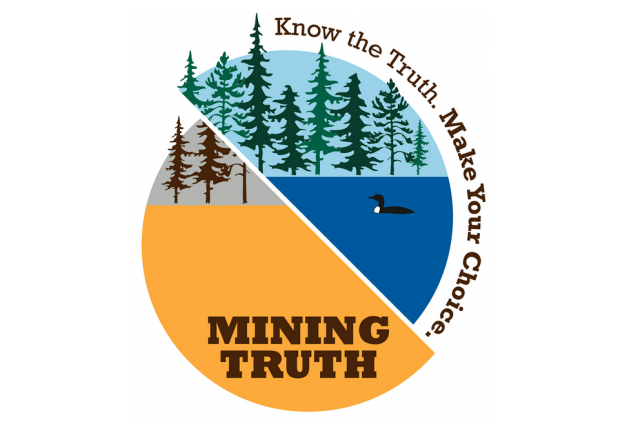
Mining Truth: About those jobs, jobs, jobs (Part 2)
Organized labor and Iron Range DFL politicians have been very supportive of proposed sulfide mining projects in northeastern Minnesota. Taconite mining in Minnesota is an industry with a higher proportion of union membership than nearly any other in the private sector industry in Minnesota. Therefore, it follows that proposed projects to mine the sulfide ores of the Duluth Complex for copper and nickel will be good union jobs too, right?
Don’t count on it. If it happens it will take a tremendous fight.
The labor history of the Iron Range is deep, and marked by violent repression by mine owners. Nowadays, it appears that the Range has been a labor stronghold since time immemorial. In reality, the gains that organized labor made in the mines came only after decades of resistance and at great human cost. It’s beyond the scope of this post to delve deeply into this history, but if you aren’t familiar with it, this audio documentary that aired last week on MPR is a great place to start.
There are echoes of the labor history of the Iron Range in the labor history of southeastern Arizona’s copper mines.
The Morenci mine is the largest producing copper mine in the United States, as well as one of the oldest. Morenci began producing copper in the 1880’s, and over a century later, its massive pit continues to grow. The history of organizing the Morenci mine is as complex and traumatic as the labor history of the Iron Range, with the Wobblies (International Workers of the World), Mine Mill (International Mine, Mill and Smelters Union), the AFL, and the CIO all playing a part. As in the iron mines of Minnesota, the mine owners used ethnic divisions and red-baiting to battle the unions. Once again, the full labor history of the Arizona copper industry is more than I can cover here, but here are a few good resources if you are interested.
Unlike the taconite mines of Minnesota, the copper mining industry in the U.S. has almost completely demolished the unions that used to represent workers. The event that precipitated the destruction of the union happened in 1983, in the form of the Phelps Dodge Morenci strike. The recession of the early 1980’s became a catalyst for owner Phelps Dodge to break the back of the Morenci unions. In 1982, Phelps Dodge announced plans to lay off over 3,000 miners in Arizona and Texas, which set of a series of negotiations with the unions. These negotiations failed, and in July 1983, the unions announced a strike. Phelps Dodge reacted with violent repression backed by the state of Arizona. After a 51 day picket, tanks, helicopters, and hundreds of National Guard troops and state police officers obliterated the picket and allowed scabs to enter the mines. One year later, these replacements voted to decertify the union. Reagan’s National Labor Relations Board allowed the decertification vote to stand in 1986.
The result of the Morenci strike was a tremendous blow to the American labor movement on the heels of the PATCO decertification in 1981. Things have never been the same. Arizona’s copper mines are now almost entirely nonunion shops, and the power of the Steelworkers union in Arizona’s copper triangle has faded to almost nothing.
While the two companies proposing copper-nickel mines in Minnesota (PolyMet and Twin Metals) don’t have a direct connection to this labor history, that’s because neither has ever opened or operated a mine. They are what the industry calls “junior mining companies,” smaller companies that speculate on new ore deposits in the hopes of developing a producing mine. However, they are indirectly connected in two ways. First, as part of a global commodities market, proposed mines in Minnesota would compete with the non-union mines in Arizona and even cheaper labor in Chile, Indonesia, and Africa. Second, the large multinational corporations who are the financial backers of PolyMet and Twin Metals are no friends of labor.
The potential of organizing a new copper-nickel mine in Minnesota has been held out for years as a potential savior for dwindling membership in the United Steelworkers. But it could also deal a substantial blow to the union, should it fail to organize the workers at a new mine. And it will be very difficult. Many of the employees of any new copper mine will be imported from elsewhere. PolyMet estimates only 25% of their labor force will be local, and it’s likely that they will depend heavily on contract and contingent labor.
Even if they initially succeed in organizing these mines, the Republicans and mining companies currently allied with labor against environmentalists could pursue right-to-work or other anti-union legislation together, which could be a blow to all Minnesota unions.
The copper mining industry in the U.S. has shown its stripes when it comes to organized labor. The alliance between labor, mining companies, Iron Range DFLers and Republicans is unstable. If new mines open, this alliance will almost immediately collapse and all of the leverage will go to the corporate owners of the mines. Organized labor’s embrace of copper mining companies is a high risk / reward play. But don’t forget about the risk side of this equation.
Follow me on Twitter @aaronklemz
In Part 3, I’ll return to southeastern Arizona and look at the impact of the 2008 opening of a new copper mine in Safford on the local economy.
While we work on our commenting system, please go to our Facebook page and leave your feedback about any post you see on LeftMN.
Thanks for your feedback. If we like what you have to say, it may appear in a future post of reader reactions.


